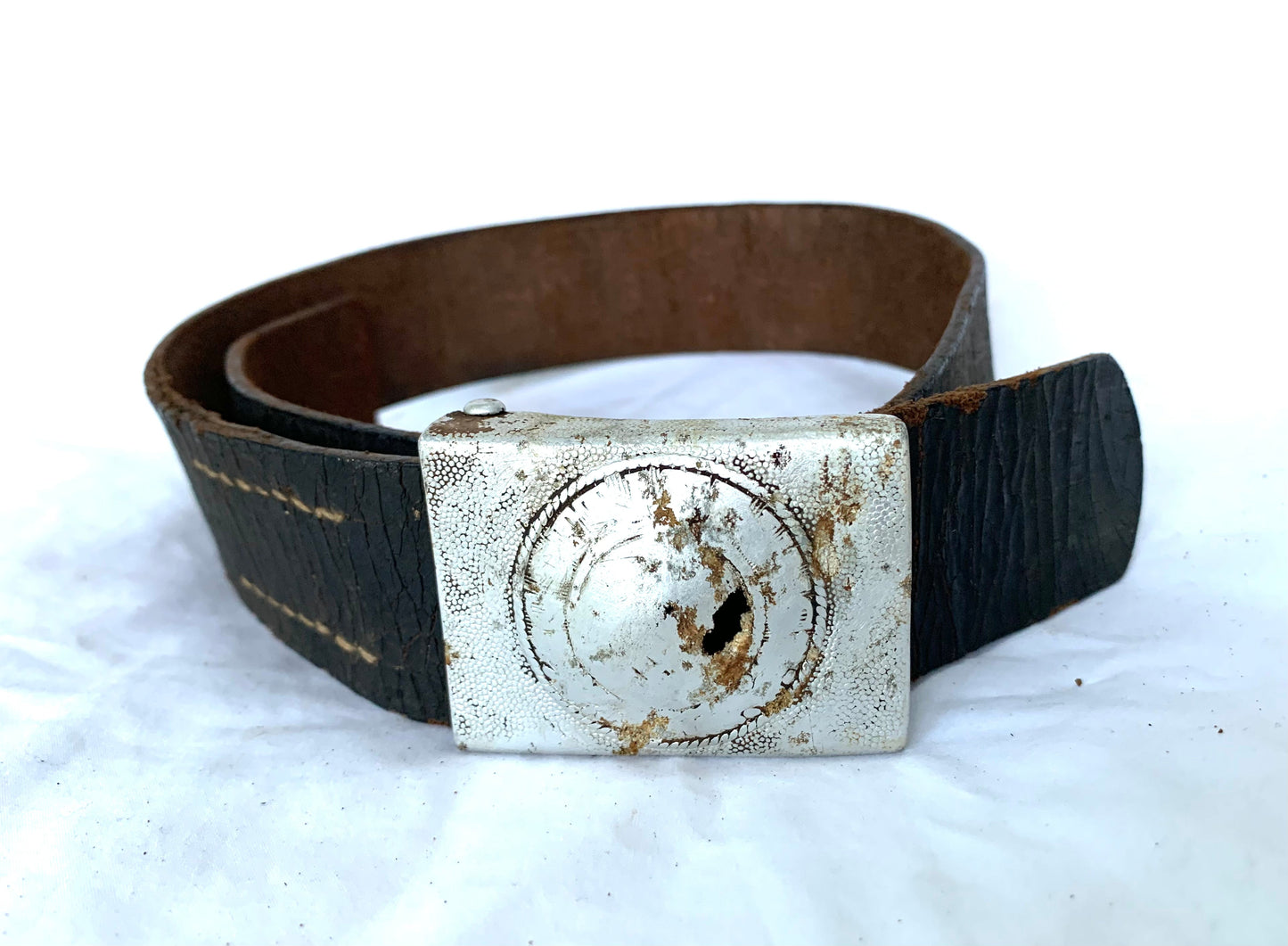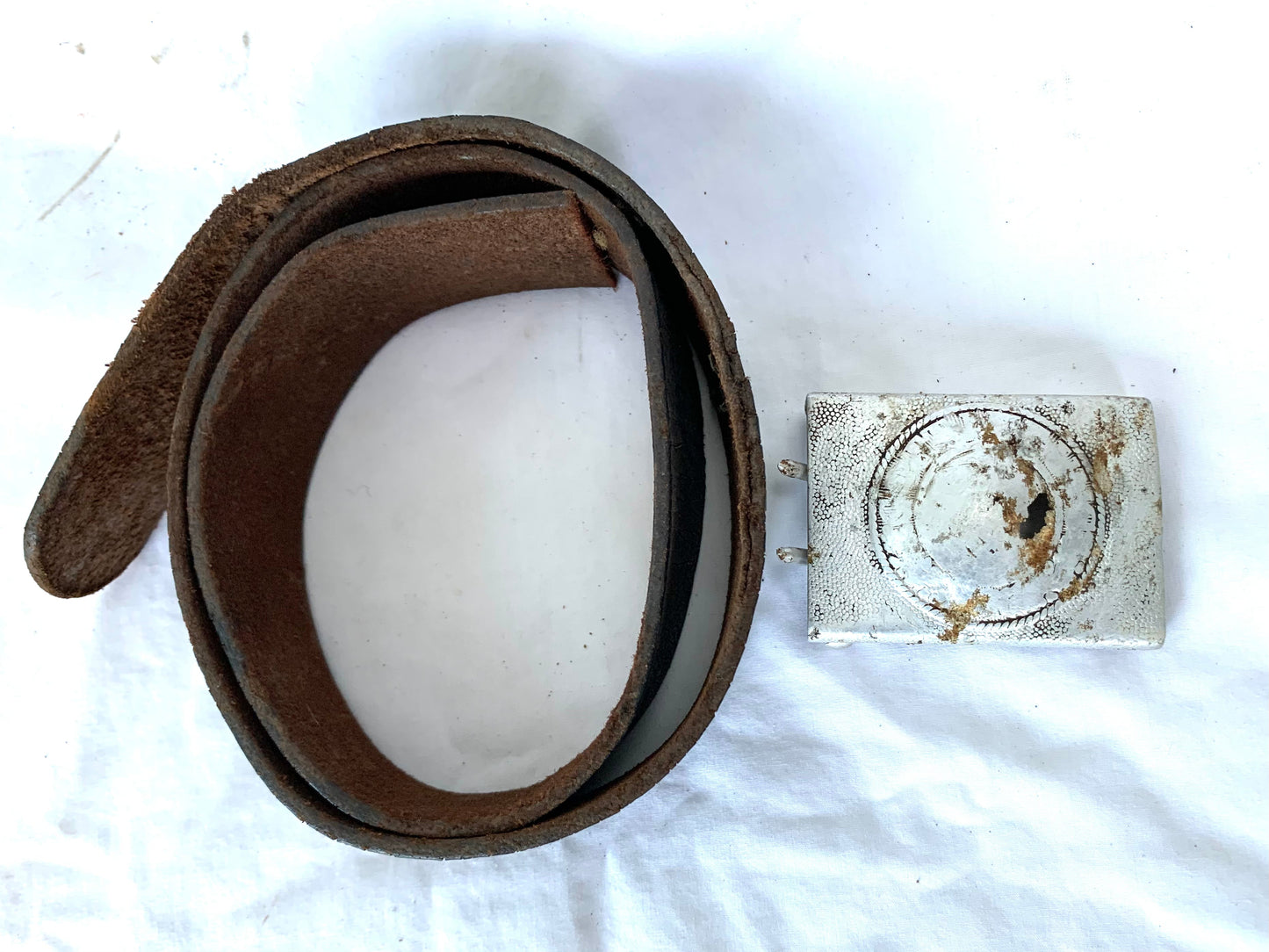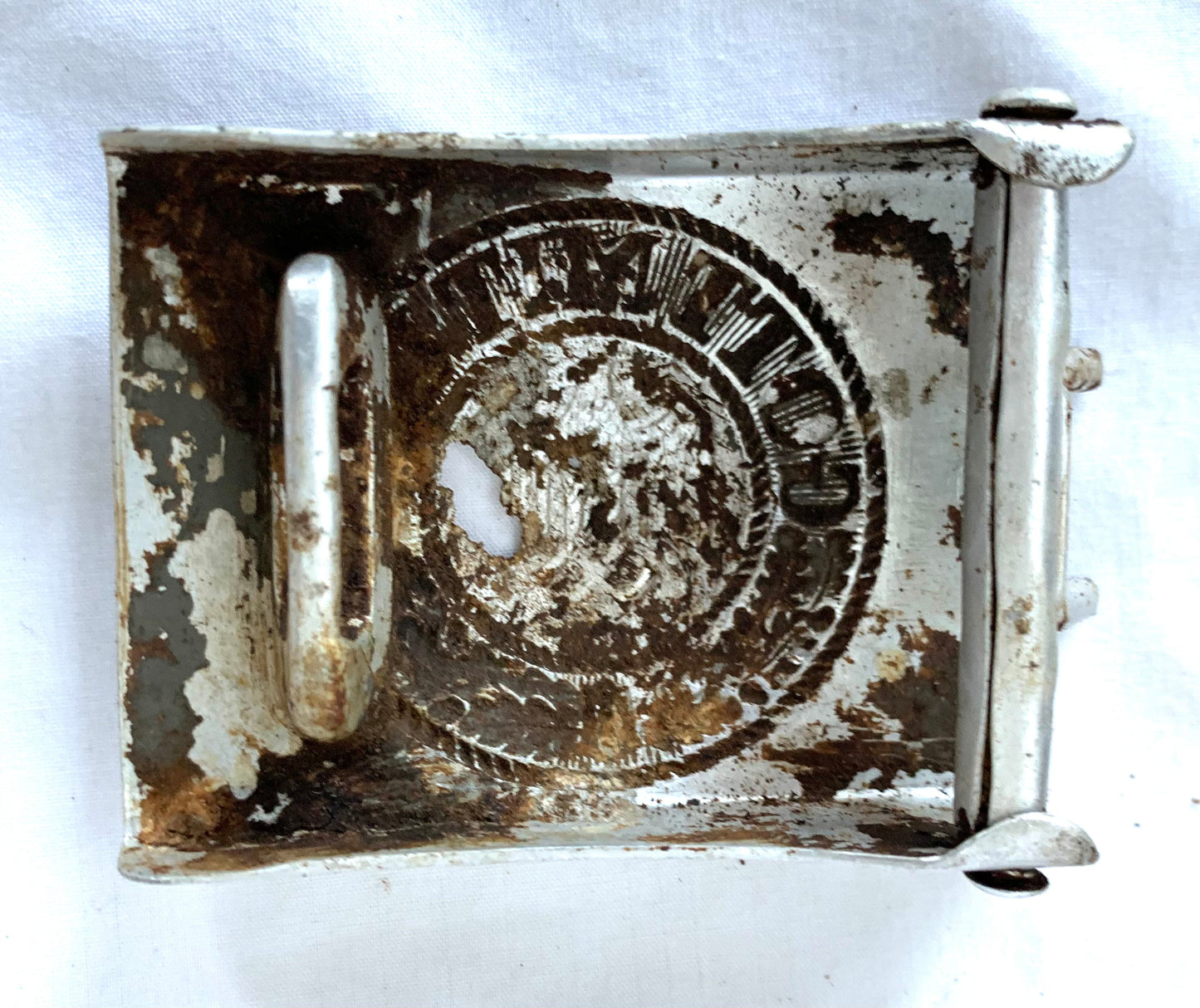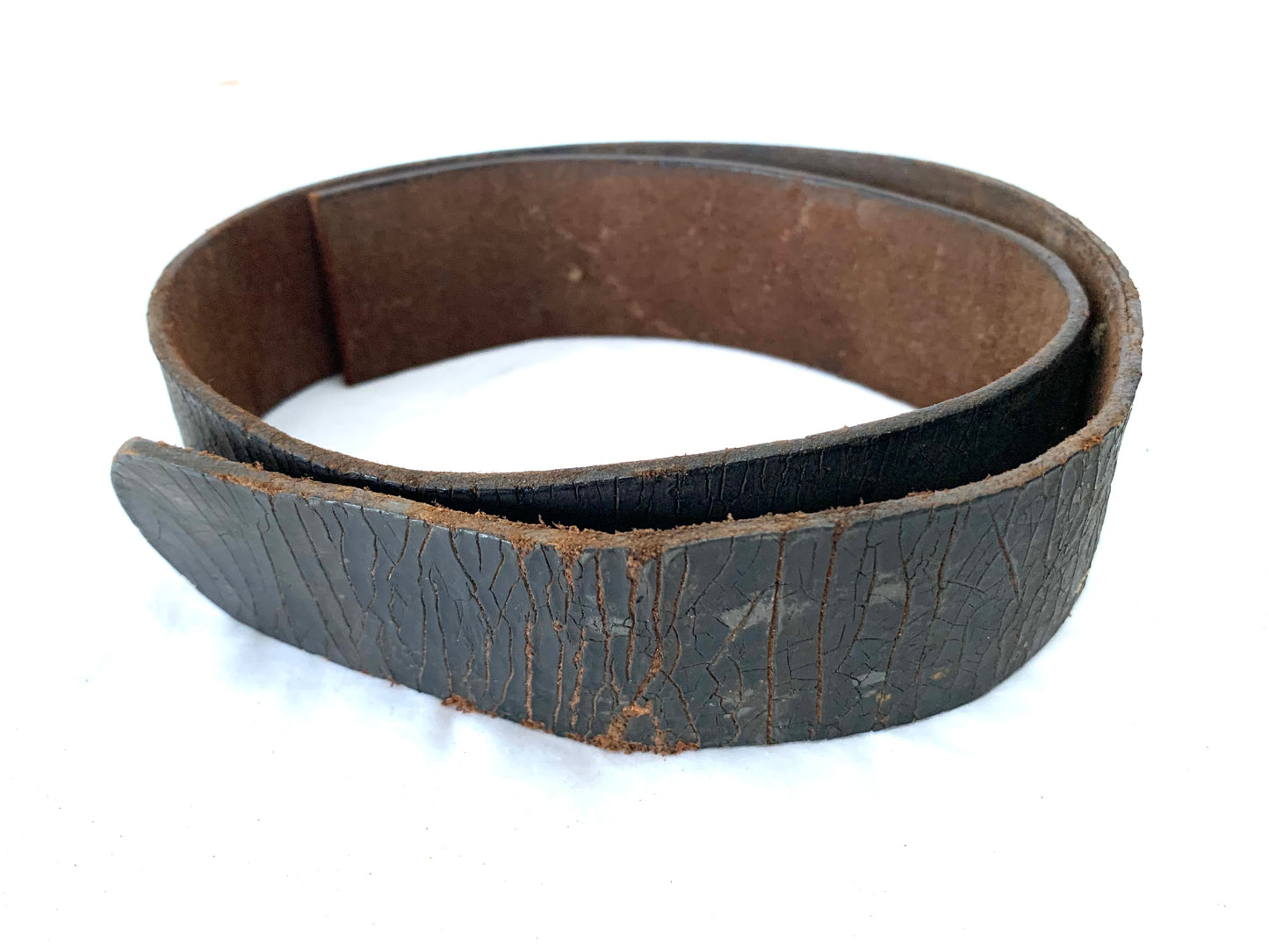Vigo Militaria and Collectables
German WW2 Soldiers/Partizan Belt and Buckle recovered from the Eastern Front
Couldn't load pickup availability
We’ve done a bit of extra research on this item, we have discovered that his battlefield found German Soldiers belt and buckle was the property of a Latvian Partisan/Soldier, which would explain the removal of the eagle and swastika.
“Latvians fought Latvians in the forests of the Courland, pitting brother against brother. Latvian soldiers either deserted from the Germans to the Soviets or from the Soviets to the Germans in those long months. They went home to see family members or to collect food and clothing.”
This buckle and belt was found in the Kurland (Courland) pocket at the positions of the German 16th or 18th Armies.
The buckle is worn (see above) but has cleaned up ok. The leather belt is not complete but the leather is in good condition considering it was hidden/buried for 70+ years.
An excellent piece of German history from the Eastern front of WW2.
The Courland Pocket was an area of the Courland Peninsula where a group of Nazi German forces from the Reichskommissariat Ostland were cut off and surrounded by the Red Army for almost a year, lasting from July 1944 until May 1945.
The pocket was created during the Red Army’s Baltic Offensive, when forces of the 1st Baltic Front reached the Baltic Sea near Memel during its lesser Memel Offensive Operation phases. This action isolated the German Army Group North from the rest of the German forces, having been pushed from the south by the Red Army, standing in a front between Tukums and Libau in Latvia, with the Baltic Sea in the West, the Irbe Strait in the North and the Gulf of Riga in the East behind the Germans. Renamed Army Group Courland on 25 January, the Army Group in the Courland Pocket remained isolated until the end of the war. When they were ordered to surrender to the Soviet command on 8 May, they were in “blackout” and did not get the official order before 10 May, two days after the capitulation of Germany. It was one of the last German groups to surrender in Europe.
Share








